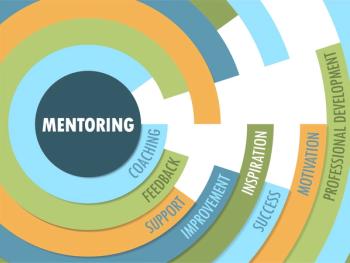
- Vol 34 No 2
- Volume 34
- Issue 2
A Crisis in the Public Service Psychiatric Workforce
Here's what's known about the growing shortage of psychiatrists -- why it's happening-- and possible solutions.
Ask any administrator of a community mental health program seeking to hire a psychiatrist and they will give a similar response: finding psychiatrists for clinical services has long been difficult and is now getting much harder. This is particularly true for clinics, community mental health centers, and hospitals dependent on Medicaid and other public funds. It is even more difficult if such programs are located within predominantly ethnic minority or rural communities.
In short, the market works as might be expected. Psychiatrists are encouraged to care for people who have money and to work where practice involves the least sacrifice. As bad as this has been in terms of addressing the most pressing psychiatric needs of the country, in recent years the challenge has increased dramatically.
Its impact is spreading beyond the public sector. For example, a large urban university with a world-renowned department of psychiatry has been unable to find psychiatrists for its student health clinic. Meanwhile, troubles in the public sector just intensify, catching pneumonia when private sector services merely catch the flu. Only 90 minutes away from the same university, a community mental health center in a small struggling city finds that psychiatrists, knowing they are a rare commodity, are asking for as much as $400,000 in annual compensation for a full-time position. Stories like this are multiplying across the country.
While it is difficult to track the numbers precisely-and few are attempting to do so-it is clear that the number of practicing psychiatrists across the country has not kept pace with the demand for public service psychiatrists, which increased even more with the expansion of insurance coverage under the Affordable Care Act. Public sector positions go unfilled and intake waiting lists-already months long-extend ever further, while the community psychiatrists who are practicing see more and more people for less and less time per patient.
Shortage of psychiatrists
Here is what is known about what is happening and why. Of note, given the absence of national efforts to actively track the psychiatric workforce (or the physician workforce more generally), the estimates of the number of psychiatrists in practice varies dramatically.
1In a recent study, researchers found that the number of psychiatrists in practice between 2003 and 2013 declined slightly from 37,968 to 37,889, a 10.2% reduction in the median number of psychiatrists per 100,000 residents in hospital referral regions. By comparison, the number of total physicians has increased by 7.7% over the past 5 years alone.1
2 Over 75% of US counties have a severe shortage of mental health prescribing providers, with over half their need unmet: 96% of US counties have “some unmet need.” Some commentators have suggested there is a current need for at least 78,000 psychiatrists in the country.2
3 The number of psychiatric Graduate Medical Education (GME) residency slots funded by Centers for Medicare & Medicaid Services has been capped at roughly 1300 since 1997. In recent years, about 1000 of these positions have been filled by MDs and DOs graduating from American medical schools and the rest by foreign medical graduates. With the exception of limited support for geriatric psychiatric training, there has been no additional federal support for community psychiatric training. This is in marked contrast to funding for training in primary care medicine, pediatrics, and family practice. Even if more American medical students chose psychiatry-as they did this year-the GME cap would prevent any significant increase in the number of trained psychiatrists.
4 We have every reason to believe that the shortage will worsen. A particularly important demographic fact is that 57% of all actively practicing psychiatrists in the US are older than 55 and are likely to retire within the next 5 to 10 years. Psychiatry is an outlier among other types of physicians, since the percentage of all practicing physicians over the age of 55 is less than 45%.3
5 While it is difficult to quantify, there are ongoing concerns that psychiatrists are “burning out” in large numbers, especially in the face of inadequate numbers to meet current need.4
6 Finally, to make matters worse and to extend the responsibility for some of these difficulties to psychiatrists themselves, over 50% of psychiatrists do not accept insurance of any kind in their private practices.5 While this is a striking fact-and unlike any other form of private sector practice in medicine-it is not clear what this means for public sector care, other than that it severely limits the amount of care provided by private practitioners to people who are covered by any kind of health insurance or Medicaid. What is not known is how many of and to what extent do these private practice psychiatrists also practice in public settings. On the face of it, without clear countervailing data about psychiatric engagement in public service clinical settings, it appears that a significant amount of psychiatric effort is particularly focused on those who have enough disposable income to pay for services out of pocket.
Summing up
The data seem to show that there are not enough psychiatrists to meet the demand, and of those who are in the workforce, many are unwilling, unable, or unqualified to work with public sector patients. Moreover, the uptake of new psychiatric providers into the system is at risk of not keeping up with the retirement rate of older psychiatric providers and the increasing demand for service based on population and demographic data.6
There has been much speculation about why things are the way they are. A number of factors have been advanced. The structure of the market is a contributor (those who have money do not reflect, in large measure, those who most need care), as is the longstanding lack of parity in payment (which has so far only improved minimally with the implementation of federal parity legislation). The stigma of psychiatric illnesses and the resulting underinvestment in psychiatric care no doubt limit the engagement of psychiatrists in public service.
The decision by the American Psychiatric Association (APA) and the federal government to remove psychiatry from the federal list of primary care specialties has likely impeded growth, leaving psychiatry out of efforts to improve primary care until very recently. Finally, the perceived increasing burden of public service psychiatric practice and the desire of psychiatrists to live well in urban areas play a role. With all these factors coming together, what, if anything, can be done, and to what end?
Possible solutions
Parity. Numerous partial solutions to address the shortage have been proposed. Some of these are based on regulating the market to overcome its failure to provide care to those in need. One much anticipated approach, working its way through the federal government and insurance companies, is the enforcement of parity, which intends to increase payment for psychiatric services by both public and commercial payers. Other than increasing the effective demand for psychiatric care over the long term, it is not clear how parity will substantially increase the number or distribution of psychiatrists in community mental health and public service, especially in the near future.
The outcome of the 2016 election makes much more likely the professed desire of the Republicans to limit the role of government; to reduce federal expenditures on domestic programs; to repeal and replace the Affordable Care Act; to diminish federal funding; and to shift the costs of Medicaid to the states, probably by converting it to a block grant program. Whatever improvements parity can achieve are likely to be dramatically outweighed by other health policy decisions of the new administration and Congress.
Telepsychiatry. Other proposals focus on using technology to improve psychiatric effectiveness, efficiency, and access. Chief among these is the use of telepsychiatry services. These services theoretically mobilize and redeploy available, untapped psychiatric capacity. It remains unclear how much surplus capacity there is and whether psychiatrists who practice telepsychiatry are consequently doing less clinical work in other areas of critical need. With this uncertainty in mind, telepsychiatry may help address the shortage and maldistribution of professional expertise-or it may simply shift the shortage from one arena to another.
There is some clear benefit in allowing psychiatrists to live where they wish and to provide clinical services through distance-based technology to more underserved and sparsely populated areas. However, distant communication–mediated care, as with telepsychiatry and other emerging and future forms of digital technology, may compromise care by preventing psychiatric consultants from obtaining the necessary appreciation of the context of their patients’ lives and the communities in which they live. Furthermore, even if they did reduce the need for psychiatrists, there is the likelihood that improved technologies will first advantage those populations with resources, leaving poor and socially excluded people and their needs for care further behind.
Collaboration. Another effort to improve the effectiveness, efficiency, and reach of psychiatric services has focused on reorganizing how psychiatrists practice, depending, in part, on the payment reforms many systems are now adopting. In the future, many psychiatrists will likely provide consultation to a variety of “psychiatric extenders,” including primary care providers, psychiatric nurse practitioners, psychiatric physician assistants, and other behavioral health professionals, as well as peer specialists. The goal is to get other clinical providers to do much of the direct patient care, permitting psychiatrists to do case review, consultations, supervision, and training with collaborative providers, as well as to provide some direct service in the form of assessment of patients with complex problems.
Some key payment reforms will make this shift possible by compensating providers for this type of provider-to-provider consultation and care coordination. To avoid shifting the burden and stress of caring for more patients than the system has capacity to serve to a workforce with less capacity to absorb it, an increase in well-trained, competent, and system-ready personnel of all relevant disciplines must be accomplished. While training for an interdisciplinary team-based workforce is occurring and the number of psychiatric nurse practitioners and physician assistants is growing, achieving sufficient system capacity is a long-term prospect. Efforts to provide primary psychiatric care as a critical component of primary health care will likely create increased demand for psychiatrists, especially if the current system of rationing care through market-based approaches increases and access to care deteriorates.
Decreased need for care. Another, more idealistic, way to reduce the impact that the shortage of psychiatrists portends is to decrease the need for psychiatric care. This is a worthy goal, despite the existential crisis such an achievement would produce within the profession. Fortunately for psychiatrists, there is no immediate prospect of this happening. In fact, it is more likely that what postmodernism, postindustrialism, and globalization are doing is to create more stress and greater psychiatric challenges. Such societal “progress” increases the necessity to prevent psychiatric disorders and to promote good mental health.
Despite advances in preventive methodologies that necessarily focus on the social determinants of health, including conscious and prospective attention to the particular needs of socially excluded populations, the gains from prevention and health promotion are at present fairly isolated and nascent. Large-scale prevention remains a distant goal.
Strategies for now
With many proposed solutions awaiting future discoveries, development, and implementation, what can be done now and what can psychiatry do about it? Since the goal of increasing numbers of practitioners is a decades-long process, the goal of redistributing psychiatric expertise seems more attainable in the short term. A continued effort to extend psychiatric expertise through provider-to-provider consultation and the use of tele-psychiatry may contribute to this, especially if federal and state funds to incentivize care in shortage areas are increased.
But more can be done now. Three years ago, while addressing the annual meeting of the APA, former President Clinton suggested that the APA create an initiative to further its social mission of providing psychiatric care to those most in need and then seek partners to grow the effort. Although the APA has a history of relatively less promotion and support for public service psychiatry than for private practice–related issues, the organization has the opportunity to engage in this timely expansion of psychiatric expertise into the public sector.
What might this look like? One idea has been for the APA to partner with the American Association of Community Psychiatrists and other like-minded professional organizations to create the American Psychiatric Service Corps (APSC), perhaps with philanthropic foundation and membership-based “crowd funding” support. As proposed, the APSC would not offer salary support but would find ways to promote and support the work of psychiatrists who provide care in public service settings across the country, prioritizing those settings that are the most marginalized. It would work in concert with the National Health Service Corps, the Indian Health Service, the Veterans Administration, the Department of Defense, the National Council for Behavioral Health, and other provider organizations and academic programs, as well as states, territories, and reservations. This coalition could develop methods and promote efforts to recruit and retain public service community psychiatrists by advocating for their interests and the interests of the people, communities, and organizations they serve.
The Pennsylvania Psychiatric Leadership Council (PPLC) is an example of how to achieve such goals. The PPLC was created in 2005 to ensure that the state’s residents have timely access to excellent psychiatric services. PPLC comprises public service psychiatrists, consumer advocates, family members, administrators, managed care representatives, and other organizations, including the Pennsylvania Psychiatric Society. One of its initiatives, supported with limited funding from the state, has been the creation of 3 Centers of Excellence in Public Service Psychiatry with associated fellowships. PPLC is working closely with the state, the Pennsylvania Psychiatric Society, and the network of psychiatric provider organizations to increase their combined capacity to recruit and retain committed, excellent public service community psychiatrists.
Is it possible for similar entities to develop in some or all of the remaining states and territories? The APSC concept may be the type of vehicle to drive such a process. Some public service psychiatrists may need supported time to work in and with these entities. Some trusted organization will need to track and report on the state of public service psychiatry. While the APSC approach would not on its own increase the psychiatric workforce overall, it could begin to address the issue of the profound maldistribution of psychiatric expertise, as the PPLC already has begun to do in Pennsylvania. This initiative could contribute to the effort to rededicate the profession’s commitment to social justice by re-engaging it as an active participant in the struggle to improve the health of the nation and achieve health equity. One long overdue effect could be the enhanced professional status (and compensation) associated with being a committed, competent, systems-ready public service psychiatrist.
Acknowledgment–The authors acknowledge the American Association of Community Psychiatrists (AACP) for helping to bring this article to fruition. The mission of the AACP is to promote health, recovery, and resilience in people, families, and communities by inspiring and supporting psychiatrists and transforming psychiatry.
Disclosures:
Dr. Thompson is Clinical Associate Professor of Psychiatry, University of Pittsburgh, PA. Dr. Flaum is Clinical Professor of Psychiatry, University of Iowa Carver College of Medicine, Iowa City, IA. Dr. Pollack is Professor for Public Policy, Oregon Health and Science University, Portland, OR.
Dr. Thompson reports that he is the part-time medical director of the Pennsylvania Psychiatric Leadership Council. Drs. Flaum and Pollack report no conflicts of interest concerning the subject matter of this article.
References:
1. Bishop TF, Seirup JK, Pincus HA, Ross JS. Population of US practicing psychiatrists declined, 2003 to 2013, which may help explain poor access to mental health care. Health Affairs. 2016;35:1271-1277.
2. Konrad TR, Ellis AR, Thomas KC, et al. Country-level estimate of need for mental health professionals in the United States. Psychiatr Serv. 2009;60:1307-1314.
3. Association of American Medical Colleges Center for Workforce Studies. 2012 Physician Specialty Data Book. Washington, DC: Association of American Medical Colleges; 2012:16.
4. Kumar S. Burnout and psychiatrists: what do we know and where to from here? Epidemiol Psychiatr Sci. 2011;20:295-301.
5. Bishop TF, Press MJ, Keyhani S, Pincus HA. Acceptance of insurance by psychiatrists and the implications for access to mental health care. JAMA Psychiatry. 2014;71:176-181.
6. US Department of Health and Human Services. National Projections of Supply and Demand for Selected Behavioral Health Practitioners: 2013-2025. November 2016.
. Accessed December 7, 2016.
Articles in this issue
almost 9 years ago
Introduction: Violence Toward Staff in Health Care Settingsalmost 9 years ago
Depressive Symptoms Associated With Aggressionalmost 9 years ago
The Role of Psychiatrists in Countering Violent Extremismalmost 9 years ago
APA Position on Medical Euthanasiaalmost 9 years ago
Exercise and Depression in Youthalmost 9 years ago
Top Papers That Can Change Your PracticeNewsletter
Receive trusted psychiatric news, expert analysis, and clinical insights — subscribe today to support your practice and your patients.














